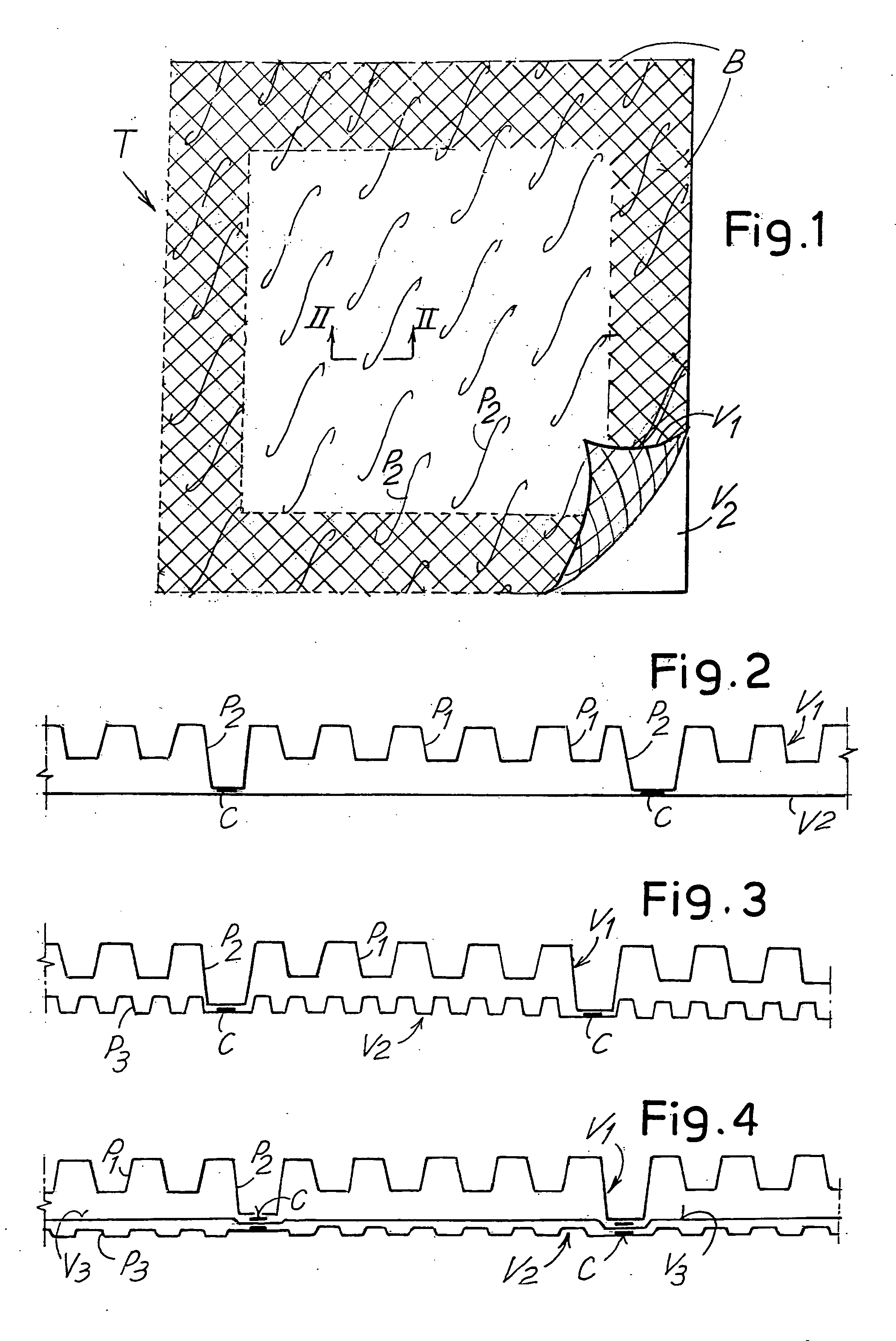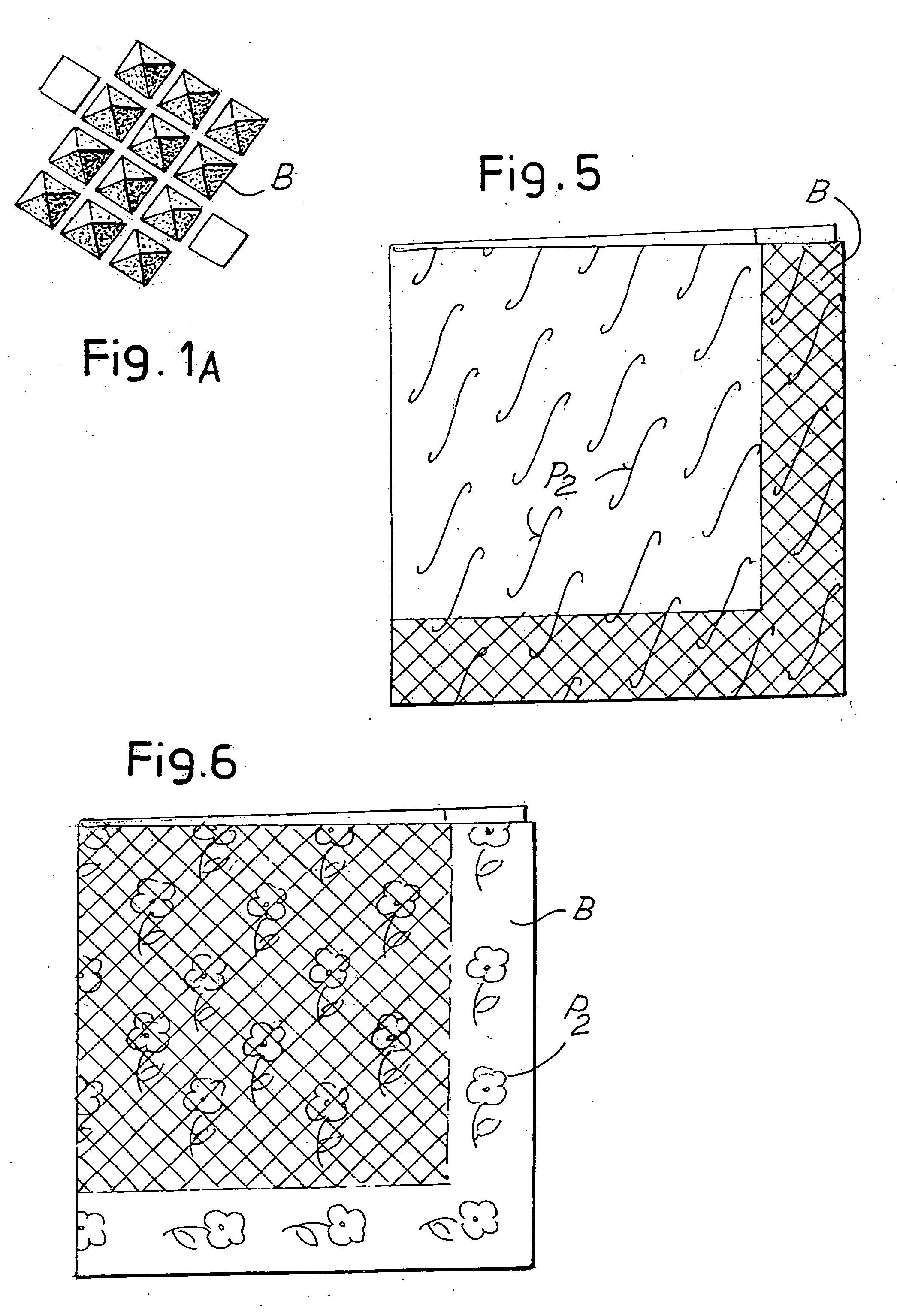Paper napkin or similar product, printed and embossed
a technology of paper napkins and embossed products, applied in the field of paper products, can solve the problems of uneven thickness of finished products, difficulty in obtaining reliable gluing, waste packaging and production, etc., and achieve the effect of overcoming or reducing the drawbacks of known products
- Summary
- Abstract
- Description
- Claims
- Application Information
AI Technical Summary
Benefits of technology
Problems solved by technology
Method used
Image
Examples
Embodiment Construction
[0035] With initial reference to FIGS. 1, 1A and 2, in a first embodiment the product in the form of a paper napkin indicated generically with T, is formed of two plies or sheets V1, V2 joined to each other by gluing. The ply V1 has a first background embossing formed of a first series of protuberances P1 of reduced height and distributed with a high density, for example of around 30 protuberances per square centimeter. The protuberances P1, not represented in FIG. 1 and shown schematically in the section of FIG. 2, can be truncated pyramid shaped, with dimensions of the larger base, for example, of around 0.1-0.5 mm and with a height of 0.1-0.3 mm.
[0036] The first ply V1 also has a second decorating embossing, composed of a uniform repetition of a second series of protuberances indicated schematically with P2. In the example shown the protuberances P2 are composed of curvilinear protuberances narrow and long in shape, although this must be considered purely as an example. In fact,...
PUM
| Property | Measurement | Unit |
|---|---|---|
| area | aaaaa | aaaaa |
| height | aaaaa | aaaaa |
| shape | aaaaa | aaaaa |
Abstract
Description
Claims
Application Information
 Login to View More
Login to View More - R&D
- Intellectual Property
- Life Sciences
- Materials
- Tech Scout
- Unparalleled Data Quality
- Higher Quality Content
- 60% Fewer Hallucinations
Browse by: Latest US Patents, China's latest patents, Technical Efficacy Thesaurus, Application Domain, Technology Topic, Popular Technical Reports.
© 2025 PatSnap. All rights reserved.Legal|Privacy policy|Modern Slavery Act Transparency Statement|Sitemap|About US| Contact US: help@patsnap.com



